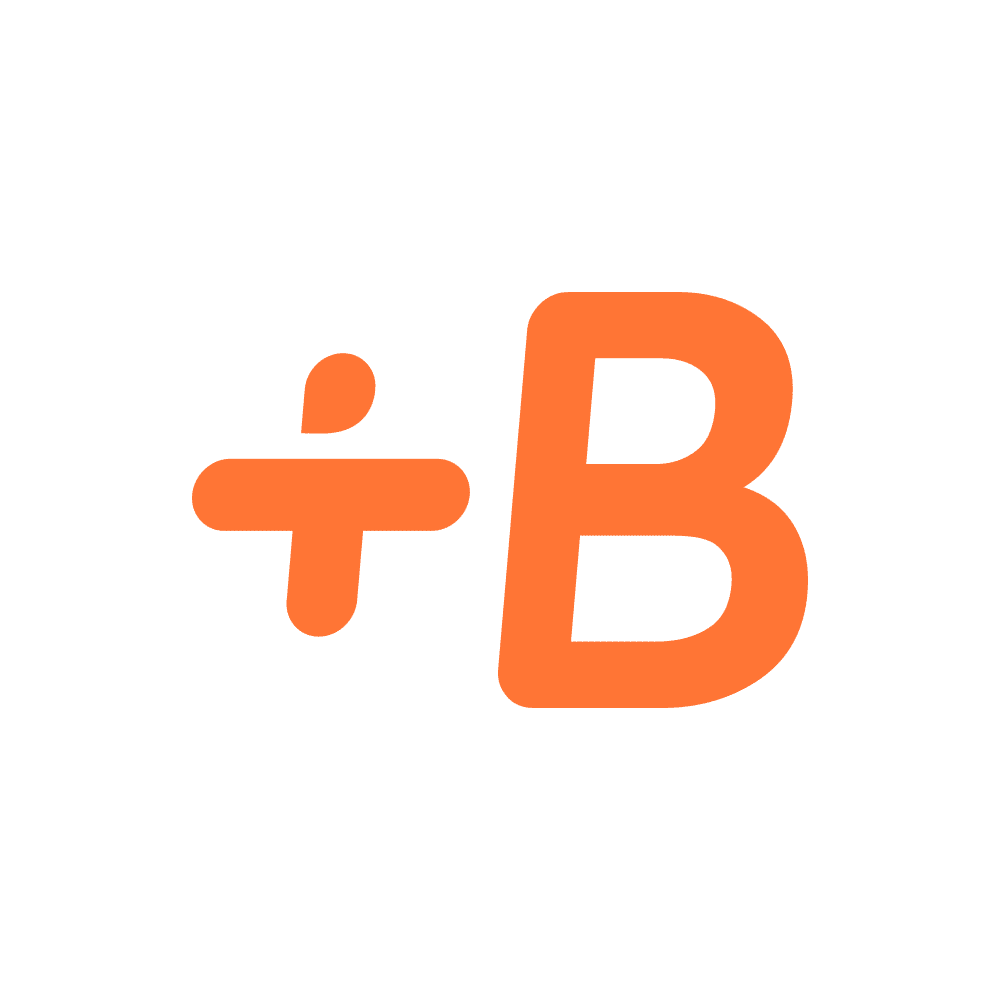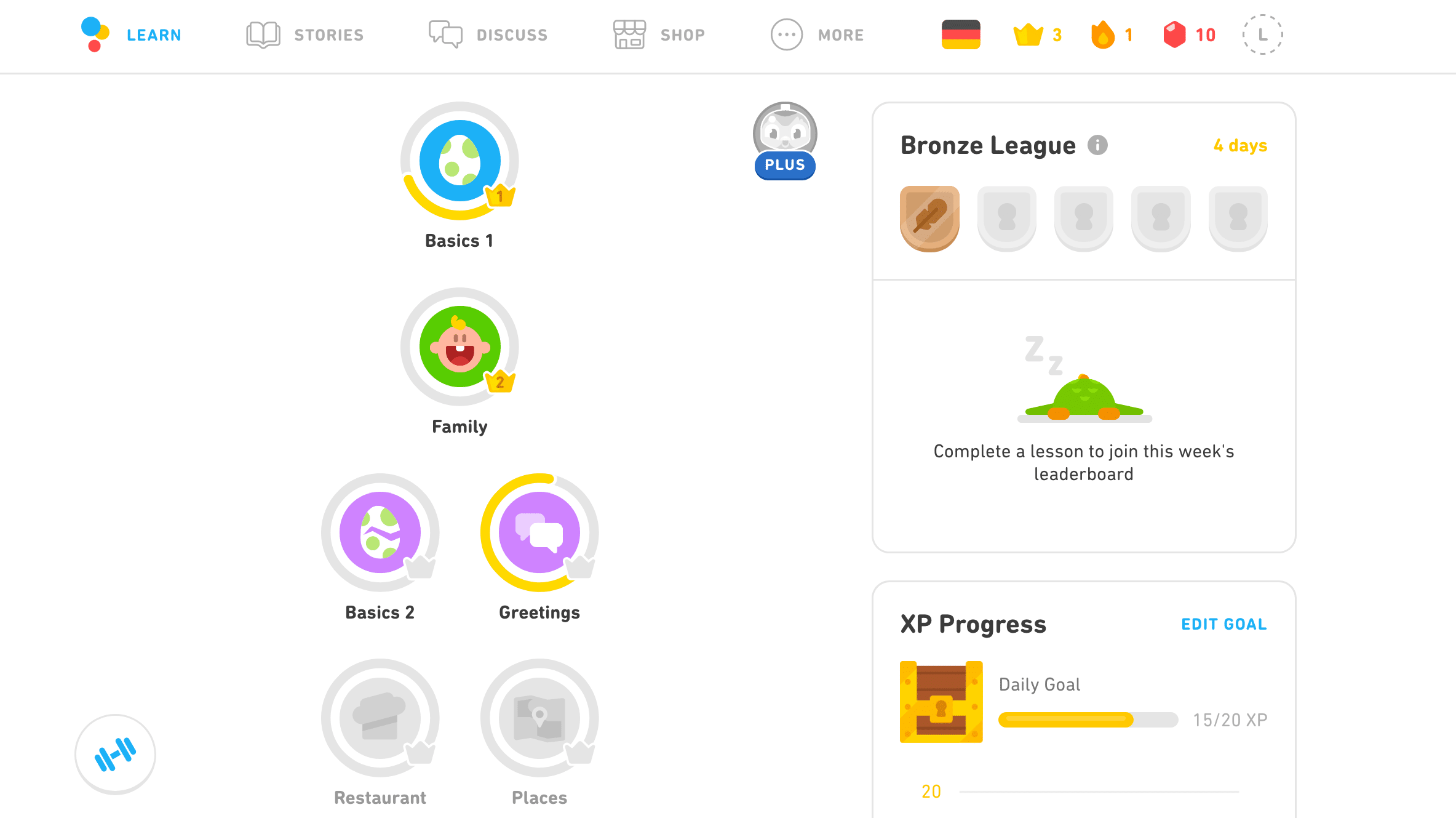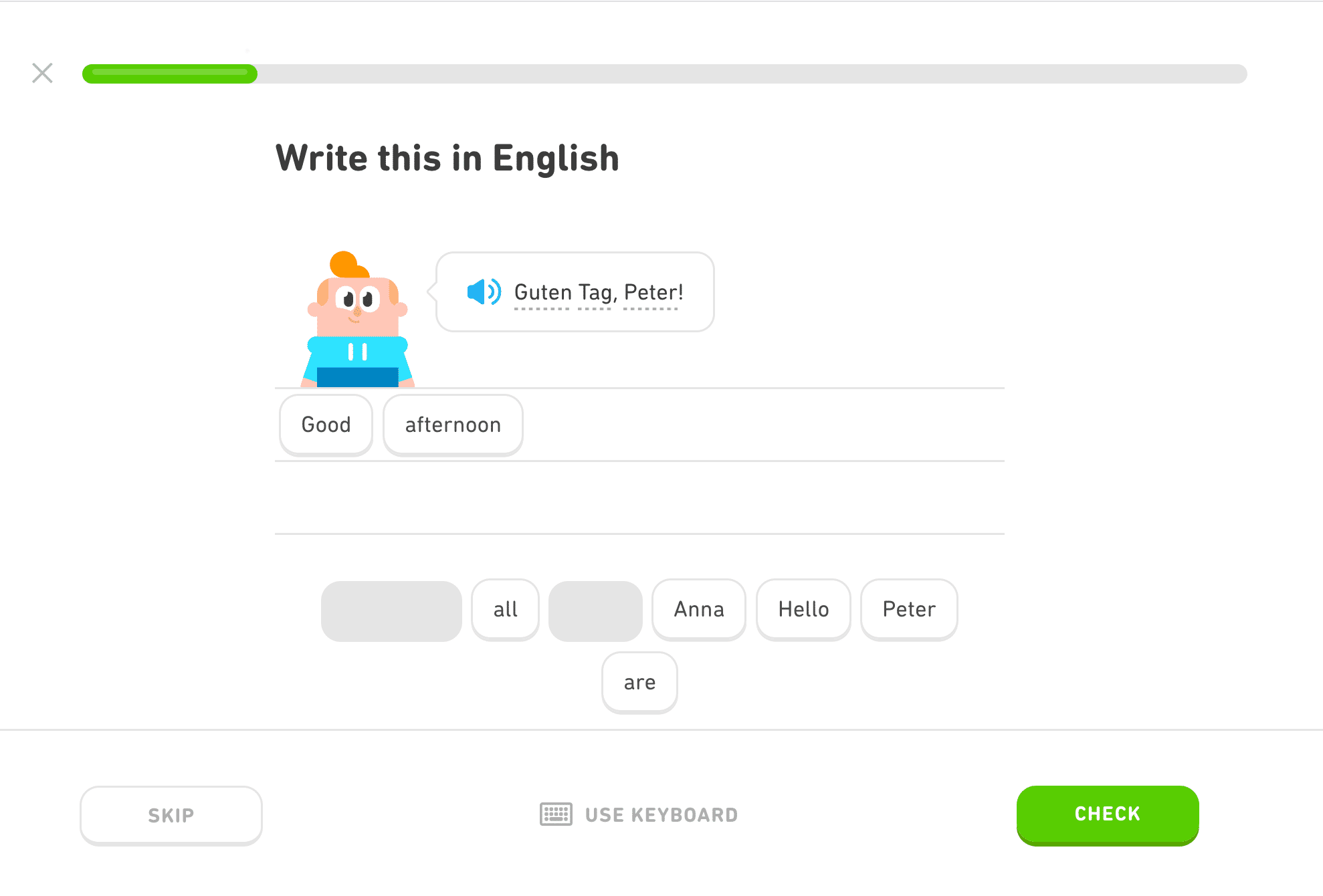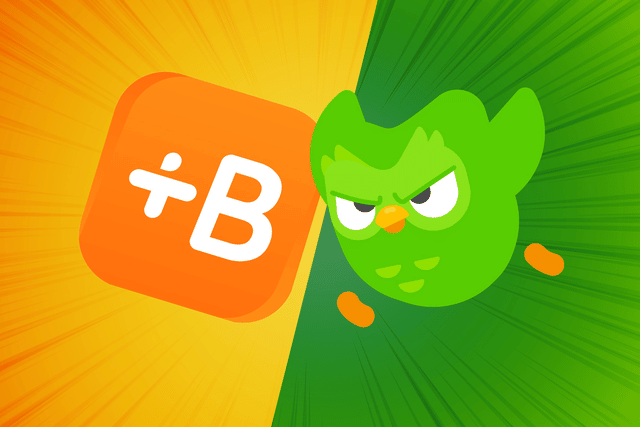
Babbel vs. Duolingo: Do You Need Structured Instruction or Free Fun?
Should you boost your learning with Babbel or Duolingo?
As an experienced language learner myself, I tried both of these apps out to save you the time and hassle.
In this review, I’ll compare Babbel and Duolingo, which I used to study German, and I’ll discuss their respective strengths and weaknesses.
Ultimately, Babbel is a good fit for those who are a bit more serious, as it has more instruction. On the other hand, Duolingo is a better fit for those who are dabbling in a new language and would like a bit of a foundation.
Read on to get all the details!
Contents
- Key Takeaways
- What are Babbel and Duolingo?
- How Do Babbel and Duolingo Work?
- Babbel vs. Duolingo
- Final Thoughts: Is Duolingo or Babbel Better for You?
Download: This blog post is available as a convenient and portable PDF that you can take anywhere. Click here to get a copy. (Download)
Key Takeaways
While I did study German back in school, I decided to claim that I was a complete newcomer to the language to see how both of these apps would handle absolute beginners and learners of other levels. This is what I found:
- Babbel is a good option for someone who is serious about learning a bit more of their target language. There’s more structure and instruction, so you’ll be able to learn and say some basic phrases.
- Duolingo is great for someone who is dabbling in the study of their new language. If you’d like to learn a few new foundational vocabulary words and language basics during your free time, this is the app for you.
Here’s a quick breakdown of their differences:
| Feature | Babbel | Duolingo |
|---|---|---|
| Price | Subscription-based | Mostly free |
| Languages | 14 | 40+ |
| Levels | Usually up to B1 or B2 | Usually up to A2 or B1 |
| Focus | Practical conversation | Vocabulary |
| Style | Structured, with more grammar explanations | Fun and gamified |
| Lesson Path | Linear | Flexible |
| Lesson Length | 10-15 mins | 5-10 mins |
For a closer look at both apps’ learning processes, keep reading!
What are Babbel and Duolingo?
Babbel: Structured Learning with Conversational Focus
Overview
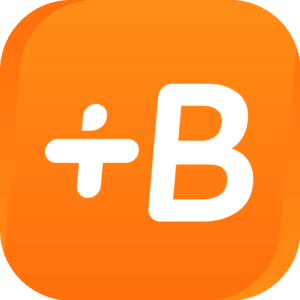
Name: Babbel
Description: The "world's first language learning app," based around 10-15 minute interactive lessons
Languages offered: 14
Offer price: Monthly subscription from $9.60/month up to a one-time fee of $190.99 for lifetime access
Summary
Babbel is a great app for anyone just starting a new language, with content that can provide a solid foundation for later learning. However, the app is limited in scope, with inconsistent amounts of content across languages.
- User friendliness - 9/109/10
- Delivers on promises - 8/108/10
- Authenticity - 8/108/10
- Value for price - 6/106/10
Pros
- Teaches applicable, useful conversational language
- Lessons build upon previous knowledge
- Includes language tips within lessons about grammar, formality, sentence structure, etc.
Cons
- Limited language choice, considering the age of the app
- Amount of content and features offered are inconsistent across languages
- Not all languages offer intermediate or advanced levels
- Not enough variety in exercise format
Babbel is one of the longest-running language learning apps around, with its first version released in 2008.
It teaches you a language through short lessons with conversational scenarios and exercises. Babbel offers 14 languages.
Like most other apps, you have to pay for a subscription in order to use Babbel. The pricing depends on your subscription, with the cheapest being $6.95 for 12 months, paid yearly.
Despite this, Babbel still ranks highly among language learning apps and has thousands of active users.
Duolingo: Fun, Gamified Lessons with Great Visuals
A Quick Duolingo Review

Name: Duolingo
Description: An incredibly popular app that gamifies language learning.
Languages offered: Over 30 languages including Arabic, Chinese, English, Japanese, German, Italian, Korean, Spanish and more.
Offer price: Free, with a premium subscription for additional features starting at $6.99 per month
Summary
Duolingo is a free app that gamifies language learning and makes it fun with bite-sized, playful daily sessions. It won’t help you reach fluency in a language but it’ll get you started with effective practice of vocabulary and sentence structure.
- User friendliness - 10/1010/10
- Delivers on promises - 8/108/10
- Authenticity - 7/107/10
- Value for price - 10/1010/10
Pros
- Uses organized, progressive lessons
- Teaches sentence structure from the get-go
- Features game-like learning with interactive lessons, learning streaks, colorful graphics and more fun features
- Targets all the learning skills
Cons
- Doesn’t take you beyond beginner level in most languages
- Has no practical usable language practice (like conversational speaking)
- Some languages offer more content than others
- Lacks instruction on the reasons and nuances in grammar and language usage
Most language learners are aware of Duolingo, the lurking giant of language learning apps represented by its wide-eyed green owl mascot.
Unlike Babbel, Duolingo operates on the freemium model. That means anyone with a device can download Duolingo, pick from one of 39 different languages for English speakers, and use it without having to pay a cent.
Similar to Babbel, Duolingo’s learning revolves around quick mini-exercises. These exercises use your input to teach you vocabulary grouped by various categories.
For a fee of $6.99 per month, you have the option to upgrade to Super Duolingo. This version offers a few neat bonuses, such as quizzes, the ability to practice mistakes, unlimited retries and no ads.
How Do Babbel and Duolingo Work?
What It’s Like to Use Babbel
I decided to try out Babbel’s German lessons as a complete beginner.
Babbel has beginner to intermediate level courses, as well as in-progress “independent” courses that serve as supplemental learning.
Each course has about 10 or more lessons that focus on a few vocabulary or grammar concepts, typically revolving around a certain scenario. The courses follow each other in sequential order: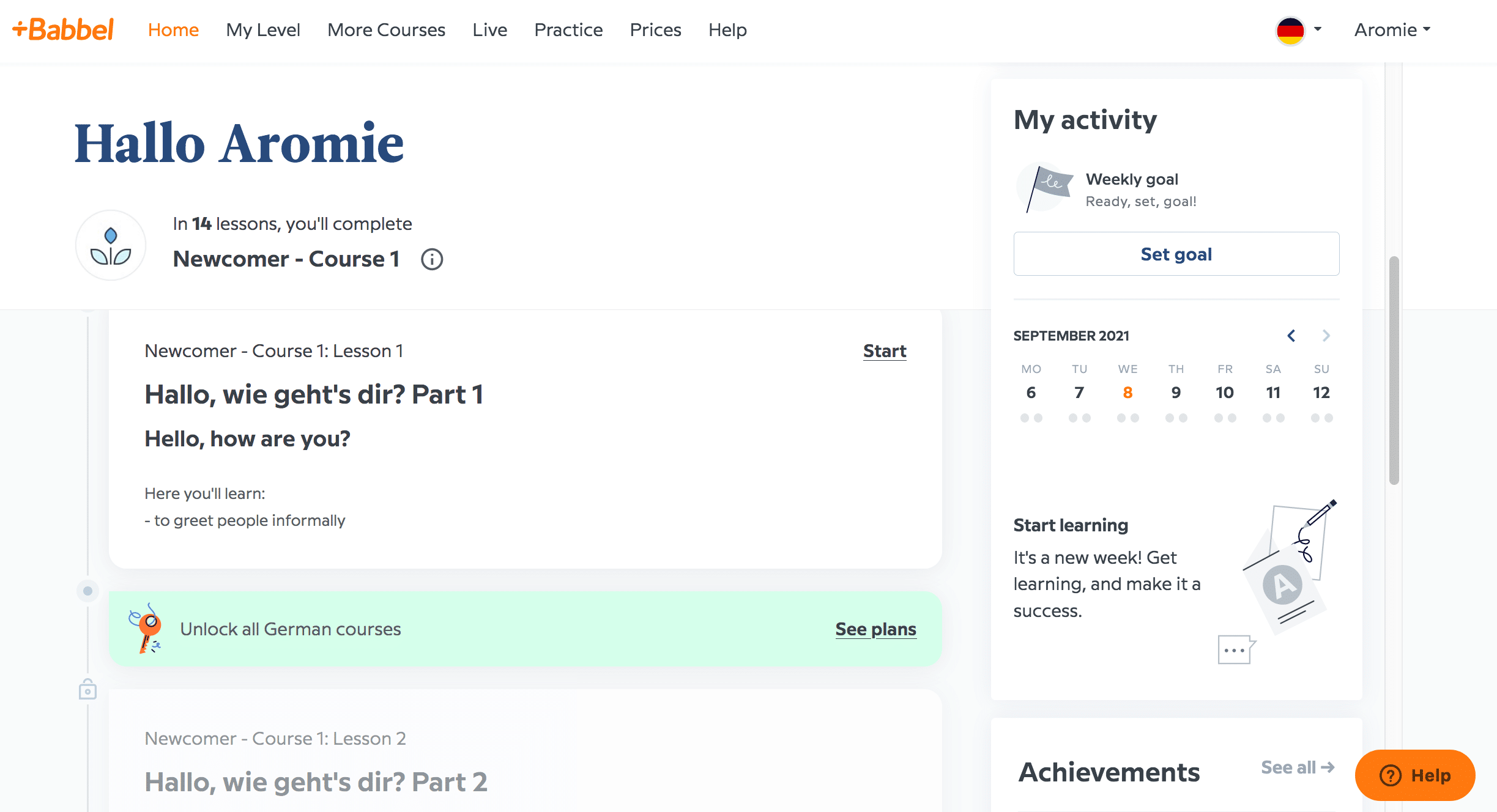
Babbel’s questions are largely of the fill-in-the-blank style, in which you must complete phrases with the right word, as in this example here:
Some require you to manually write out words or match vocabulary with the correct translation. All the exercises include both text and audio (provided by actual human speakers). If you make a mistake, you’re given the option to move on or try again.
The lessons are interlaced with short grammar explanations. These brief but helpful interjections give you pointers on how to use certain vocabulary or manipulate sentence order.
Babbel has a “Practice” section that focuses on review as well. You can do this with flashcards, listening, speaking or writing formats. There’s also the option to practice words with little games that, while very basic, are still pretty cute!
What It’s Like to Use Duolingo
In Duolingo, each language has its own “tree” of individual modules, or categories, as you can see below.
For each category, there are five different levels (from 0-5, beginner to advanced). Each lesson consists of about 12 exercises.
I didn’t find myself feeling five times more challenged at the Level 5 marker, so I assume that those who are attentive to the exercises in lower levels will feel similarly.
The exercises primarily involve text and audio, with some supporting images. They may ask you to match pictures with words, translate vocabulary, listen to audio clips or complete phrases. The exercises aren’t too different from Babbel’s:
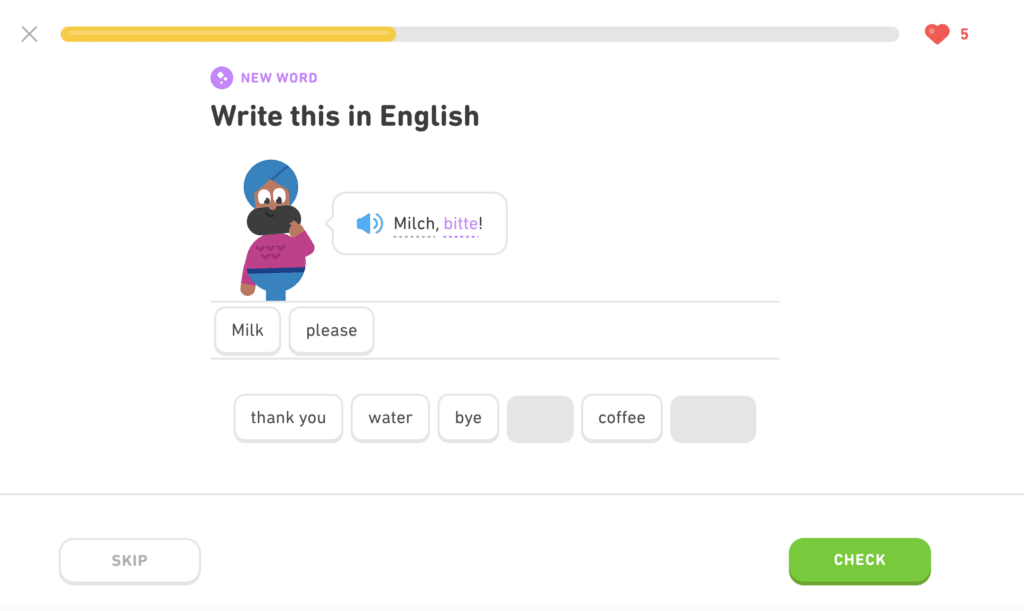
There’s also the option to do speech recognition exercises.
Your “lifespan” in Duolingo is dictated by a “hearts” system. Every time you make a mistake, you lose one heart. Losing all hearts requires you to backtrack and review the material, but your hearts will also refill every day.
After completing a lesson, you get a fun sparkly congratulations, a few rewards (like experience points) and the ability to move forward to the next category.
Babbel vs. Duolingo
Let’s see how these two language learning giants compare to each other. Based on my experience, here’s what each app does better in:
1. Babbel is More Practical and Comprehensive
My biggest gripe with Duolingo is that it teaches vocabulary, but little else. There are virtually no grammar explanations and very little context given.
Basically, I felt as if I were learning German words in a vacuum, which doesn’t bode well if I ever wish to participate in an actual German-language conversation.
Interestingly, I was also a bit thrown off guard by the fact that, despite my claim to be a complete beginner to the German language, Duolingo chose to immediately test me on full and seemingly random German words such as coffee (Kaffee), milk (Milch), and (und) and please (bitte).
On the other hand, I immediately noticed that Babbel’s method of instruction is more involved than Duolingo’s. It offers more explanations and tips regarding how the German language works.
For example, this is how Babbel explains how to express regularity in German.
These explanations are interlaced with the actual exercises and are accompanied by questions that let you practice the concepts in question. Thereafter, Babbel makes sure you encounter them again.
While these little explanations are brief, they’re still very helpful for boosting your knowledge by even a smidge.
Babbel also includes dialogue snippets in its exercises. These are narrated by actual speakers and give you a taste of the language in action, including the content you’ve just learned plus a few extra phrases to keep you on your toes.
Moreover, the conversation examples are realistic and genuinely applicable. You can easily imagine yourself partaking in the same back-and-forth with a real human.
2. Duolingo’s Lessons are More Engaging
The exercises in both Babbel and Duolingo actually feel repetitive, but in different ways.
With Babbel, the exercise formats were too repetitive. I wished there were more interactive exercises of that nature, rather than just clicking and writing the same few answers to the same kinds of questions.
Duolingo had a similar problem, where I felt like I was repeating and “learning” the same words over and over. There didn’t seem to be a rigorous spaced interval system for word encounters, which means in a given lesson, you’ll be saying the same couple of words again and again in repeating formats.
I can only take being tested on the words mein Vater (my father) and meine Mutter (my mother) for so long before everything starts to become dull.
Despite this, it still felt more motivating to learn with Duolingo because it operates like a game. I quite liked seeing immediate rewards for my successes, and the colorful presentation added to my motivation. The app definitely makes a case for the appeal of game-based learning.
3. Babbel Has a More Organized Structure
Learning with Babbel reminds me a lot of working with an actual German workbook. Babbel certainly isn’t as gamified as Duolingo and doesn’t flood you with rewards for successes, there’s a comfort in the consistency and structure of the lessons.
Duolingo feels a bit scattered to me in terms of its unit organization, likely because its curriculum is largely categorized by isolated topics. However, Babbel’s lessons are organized to build up your skills from the most basic to more involved phrases and sentences.
4. Duolingo Excels in Sleek, Catchy Visuals
Looking “pretty” isn’t necessarily the main priority of most educational resources, but it sure can help make learning more interesting!
Duolingo’s interface isn’t overly fancy but it is sleek and cozy. The language tree is compact and easy to navigate. In your exercises, your successes and mistakes are color-coded so it’s clear at a glance what you could use some additional help with.
One of my favorite little UI features is the module completion meter. It circles the module icon and gives you a visual representation of your progress. As a visual learner, I find this appeals to me more than just having a number percentage to detail how much I have left to learn.
In comparison, Babbel looks neat but a bit too simplistic. It can feel a bit barebones, which can lessen the sense of engagement.
5. Babbel Has Better-Quality Translations
Duolingo’s choice of translation and sentences can be a bit…iffy. This is a well-known trait and often a point of amusement for users. Sometimes Duolingo can be touchy on how you translate sentences, as seen in this example below.
At the risk of sounding nit-picky, while Guten Tag can certainly mean “Good afternoon” in the right context, it can also simply mean “Good day” and be used as a general greeting during most of the day. However, Duolingo doesn’t seem to want to budge.
Here’s another example of a quirky sentence you likely wouldn’t say in real life.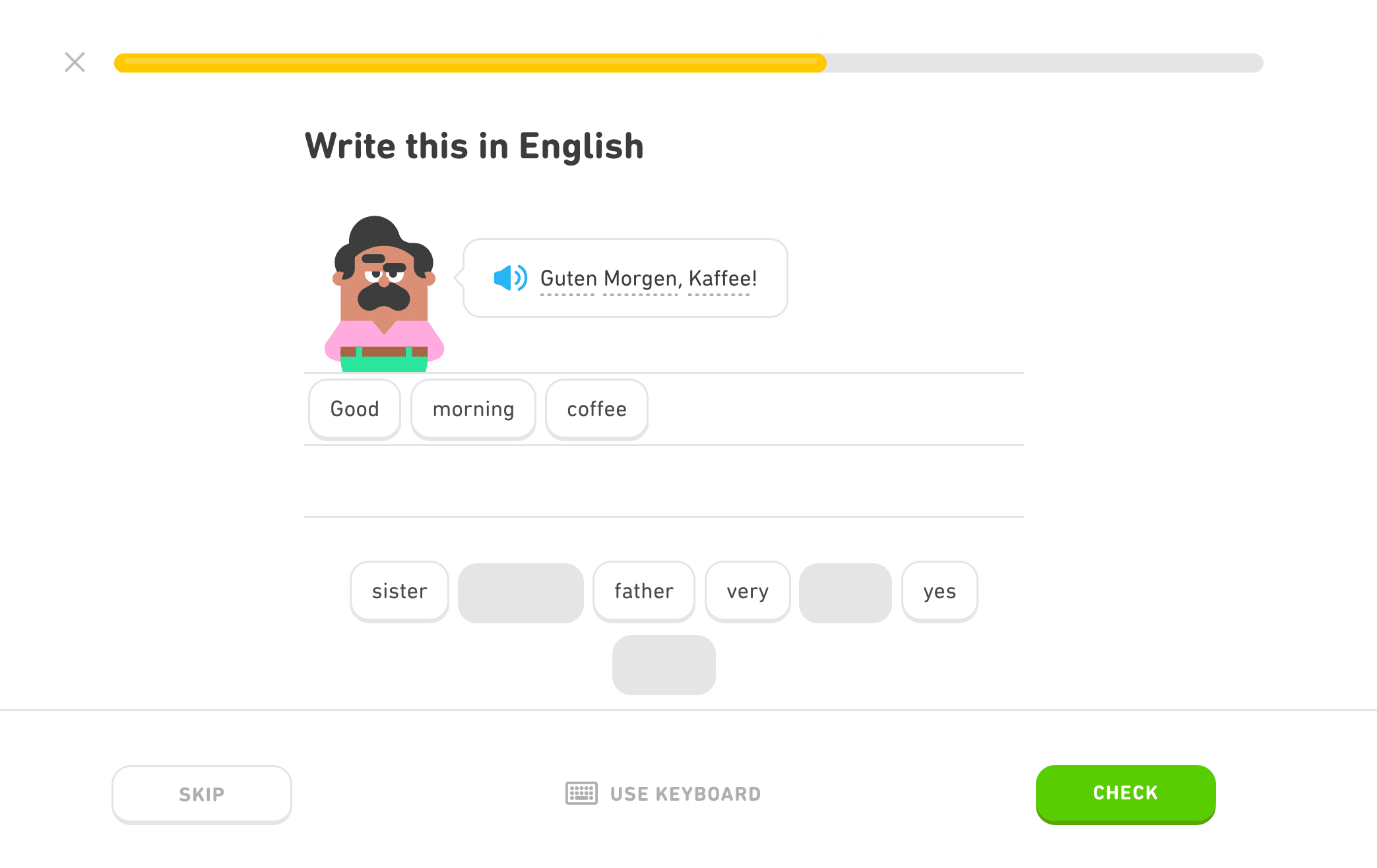
This is probably Duolingo’s attempt to get you to train what you’ve previously learned, but by itself, it’s not incredibly functional (not shaming those who do enjoy greeting their cup of morning joe!).
In comparison, I didn’t notice this problem as much with Babbel.
6. Duolingo is Free, No Subscription Needed
This is all under the umbrella that’s one of Duolingo’s greatest charms: It’s all free. Certainly, you can opt for Super Duolingo, but it’s hardly necessary if you’re using the app like most users would: casually and with a limited amount of time per day.
This also means it would be possible to gain knowledge of many languages from Duolingo without having to pay a single cent. And who can object to such freedom?
With Babbel, you need a subscription, with only seven days of free trial.
Final Thoughts: Is Duolingo or Babbel Better for You?
Duolingo works best for the hobbyist, the language-dabbler who is interested in a new language but not gung-ho about their studies. Because of its highly casual and somewhat minimalist approach to language teaching, Duolingo can make a new language approachable and introduce foundational vocabulary.
Babbel works best for more avid language learners who’d like to get a more applicable education. While there isn’t as much gamification in its format, Babbel’s lessons have more structure and instruction, organized so that you can speak and understand a number of basic phrases.
If you’d like more in-depth information on both, check out our full review of Duolingo and our full review of Babbel.
Beyond Babbel and Duolingo
Each software has its pros and cons, but ultimately, neither will do as a stand-alone learning resource. They both lack language instruction in context, which can put a big dent in the comprehensiveness and engagement of your studies.
The key to learning with Babbel or Duolingo is to put your learning into context. Watch YouTube videos, TV shows and movies in your target language and listen out for words and sentence structures that you recognize.
Both Duolingo and Babbel would do well paired with a program that puts the vocabulary and basic language you’re learning into an authentic context that provides support for learners.
On the language learning program FluentU, for example, you can see all the words you’ve learned in context and spoken naturally by native speakers.
With FluentU, you hear languages in real-world contexts—the way that native speakers actually use them. Just a quick look will give you an idea of the variety of FluentU videos on offer:

FluentU really takes the grunt work out of learning languages, leaving you with nothing but engaging, effective and efficient learning. It’s already hand-picked the best videos for you and organized them by level and topic. All you have to do is choose any video that strikes your fancy to get started!
Each word in the interactive captions comes with a definition, audio, image, example sentences and more.
Access a complete interactive transcript of every video under the Dialogue tab, and easily review words and phrases from the video under Vocab.
You can use FluentU’s unique adaptive quizzes to learn the vocabulary and phrases from the video through fun questions and exercises. Just swipe left or right to see more examples of the word you're studying.

The program even keeps track of what you’re learning and tells you exactly when it’s time for review, giving you a 100% personalized experience.
Start using the FluentU website on your computer or tablet or, better yet, download the FluentU app from the iTunes or Google Play store. Click here to take advantage of our current sale! (Expires at the end of this month.)
At the end of the day, whether you choose to study with Duolingo or Babbel, the key will be to accompany your learning with plenty of context!
Ultimately, there’s no better determiner than feeling everything out first-hand.
I hope that my look at Babbel and Duolingo will give you an easier time choosing which language learning app is better for your learning style!
